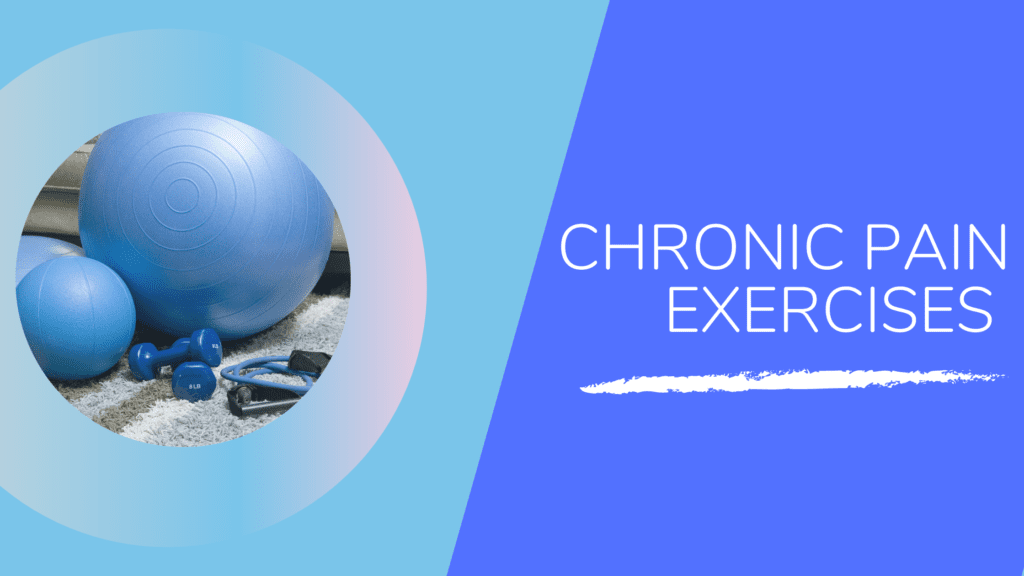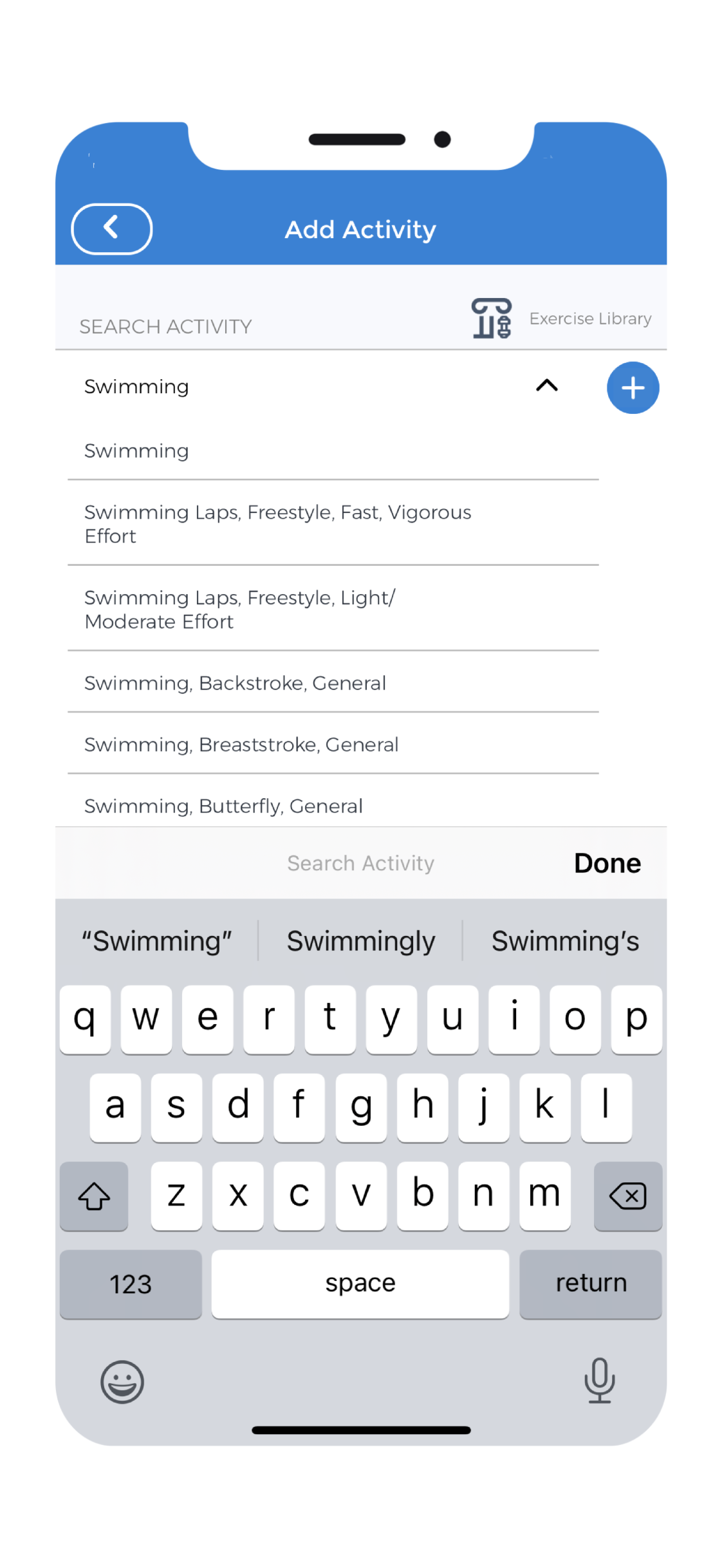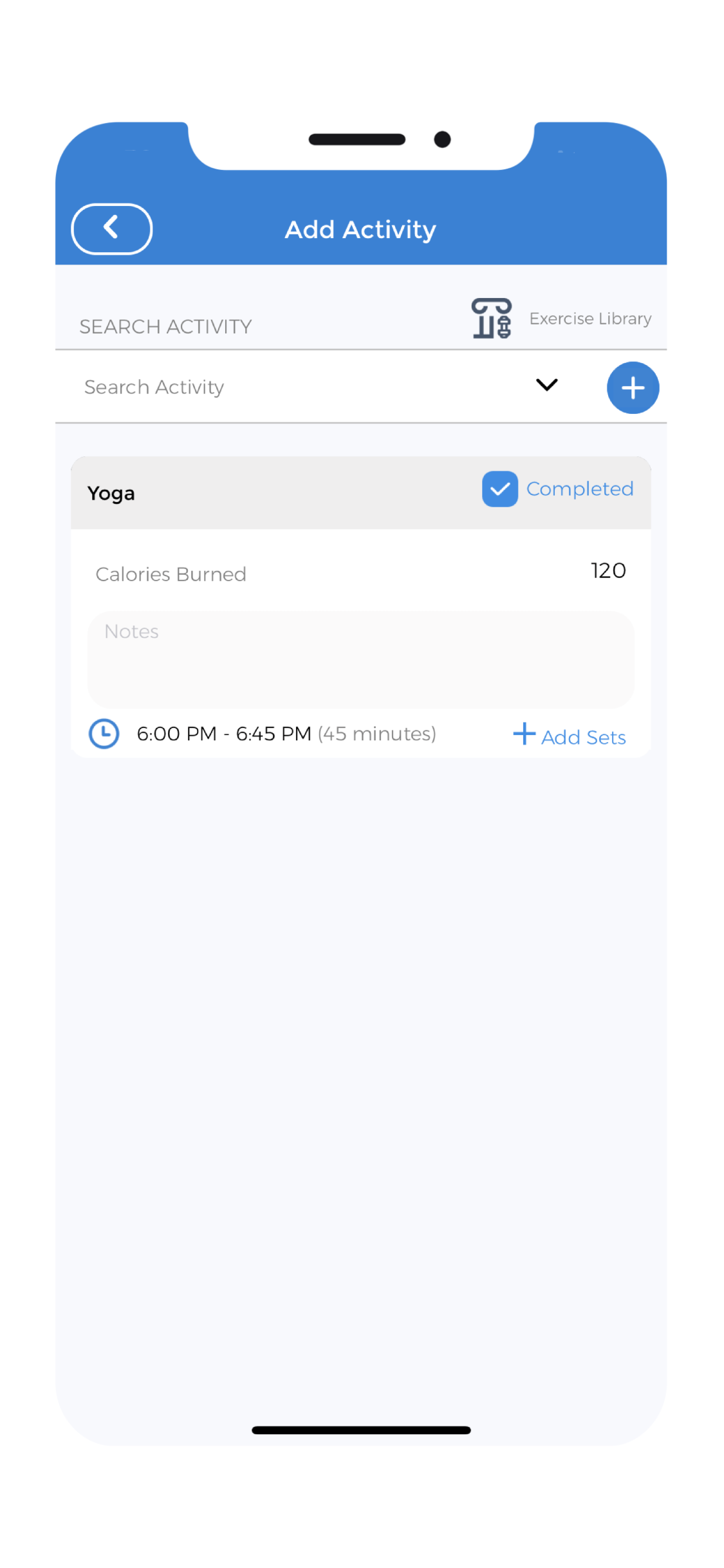
There are many types of treatments available on the market to help manage chronic pain. Oftentimes, we turn to medication to help ease the pain. However chronic pain exercises are a different type of treatment that can also help with pain management.
What it is
Chronic pain refers to pain that is persistent, lasting over 12 weeks. Our body tissues normally take up to 12 weeks to heal. So pain lasting longer than that is an indication that something is wrong. Excessive suffering is your body’s way of you telling it has not healed. A National Health Information study found that in 2019, 20.4% of adults in the U.S had chronic pain. Of that, 7.4% found a limitation in life or work activities (referred to as high-impact chronic pain) in the past 3 months. Specifically, women were more likely to have chronic pain (21.7%) and high-impact chronic pain (8.5%). In comparison with men, where the results were 19.0% and 6.3%, respectively (R).
Chronic pain can affect anyone regardless of age, race, and gender. While the CDC found that women and non-Hispanic white adults were more likely to suffer, it can still affect adults aged 18 years and up. It can often lead to disability, anxiety, depression, poor quality of life, and other body stressors. Many people find that living with chronic pain can be costly and time-consuming to manage. Especially if you are unaware of the root cause of your pain, it can be frustrating to handle.
What causes it
Sometimes the reason behind chronic pain is not always apparent. It can affect any person at any given time. While the cause of chronic pain can sometimes be unknown for some, a health issue is often the underlying cause. Arthritis, fibromyalgia, nerve damage, and gallbladder disease are some common causes of long-term pain. It can stem from an injury, past surgeries, poor postures or extended improper activity. Over-exertion of the body and other stress factors could result in chronic pain. There are many factors that cause it, or a single factor could be the main contributor. In many cases, it can be hard to determine the exact source of chronic pain, but there are tips to help you manage the pain, such as exercise.
We have read about a few causes of chronic pain. For more information regarding arthritis, fibromyalgia and back pain, refer to our website to read up on more detailed content and tips.
If you experience chronic pain, you may find yourself reaching for prescription medication. Relying on medication long-term can impact our body, weakening its own resolve to repair and regulate.
Why exercise?
A lot of people suffering from chronic pain, feel that exercise can make their symptoms worse. However, exercising is meant to strengthen your muscles. If you have weak muscles, you will experience pain more. When you have stronger muscles, they will support your tight joints, and help you to ease the pain. You will feel more energized, allowing you to tackle your daily tasks, without restraint.
It can be scary to start a physical activity when you are already dealing with pain. A workout can be associated with soreness, which is the last thing you may want to deal with. For some time, the treatment of choice for chronic pain management was to rest and avoid exercise. Chronic pain exercises however are now frequently being recommended in many healthcare systems. Some studies have found the efficacy in incorporating activity and movement for chronic pain management (R).
Not only will chronic pain exercises help you to manage your pain, but it will also help to improve your overall mental and physical health.
Exercise is defined as physical activity that is structured and repetitive and meant for conditioning the body (R). Its purpose is to help strengthen muscles and stimulate heart rate, in order to increase blood flow and circulation. With increased circulation, the body is more active in managing any bodily issues and restoring damage. Exercising also releases endorphins, which relieve pain and make you feel happy Although there is no fixed regime of chronic pain exercises, low intensity physical activity is the best place to start. There are many different types of exercises available to us through at home workouts and fitness classes. It is imperative that you talk to your trusted physician before you start any type of physical training.
“Movement is a medicine for creating change in a person’s physical, emotional, and mental states.” – Carol Welch
While symptoms of chronic pain range from mild to severe, the problem lies in that it interferes with your daily life. This can affect your self-esteem and make it seem like you have no control. Exercise can also help to reduce the risk of further health concerns. Moderate, daily activities can also help to promote an overall healthy and happier lifestyle. Everything in moderation, be it food, medication, work and activity will help sustain a productive life.
Do not feel discouraged. Instead focus on learning how to improve movement. The fluidity of movement, the actions that hurt less, the actions that feel soothing. Once you can grasp when the pain comes and from what actions, you can manage your symptoms. These are some tips that may help you understand better.
Another tip would be seek out advice from people who experience similar symptoms as yours. There are trained professionals who have studied techniques, so reading their tips may help you make valuable choices.
 How to exercise for chronic pain management
How to exercise for chronic pain management
Many physicians and specialists recommend you perform lightweight and low intensity workouts. The last thing you want to do is overwork your body and experience any more pain. Before you begin, it is good to go into it with a steady mindset. Some thoughts to consider include:
- How do you feel about exercise?
- What do you think you can do? What are your limitations?
- Where does your confidence lie when it comes to physical activity?
- How tolerable are everyday tasks when dealing with pain?
- Do you feel that this could be a solution for you?
It is good to be aware of your limitations, and work towards finding workouts that help you feel good at the end of the day. Try to avoid comparisons and focus on what you are able to do. Many people have the misconception that you need to sweat or be out of breath after your workout. This is not always the case for every single person, so try to shift your focus away from that thought process. What makes you feel good and comfortable, is your main focus. Exercise is about stimulating your body and improving your body’s endurance and tolerance levels.
Chronic pain exercises can vary depending on the type of chronic pain you may suffer from. Once you assess your capabilities and limitations, you can develop an exercise routine suitable for your needs. Be sure to develop a routine that helps you reach your goals and has your physician’s approval.
Some examples of chronic pain exercises include:
- A stroll around the neighborhood, a brisk jog, a small hike, biking
- Yoga, gentle neck rolls, stretching the body out, a few side bends and twists
- Light weightlifting, lunges, use of resistance bands
- Beginners exercise classes, Pilates, tai chi
- Aquatic therapy
Joining a beginner’s class for exercises like pilates, yoga, and cycling is a great start to learning about various workouts that work for you. Keep in mind to listen to your body during the sessions. If you feel some actions cause your symptoms to flare up, that is your body’s way of telling you to stop. Don’t be afraid to pause, or let the instructor know. Remember, exercise is meant to help strengthen and ease the pain, not increase it.
“At the end of the day, your health is your responsibility.” – Jillian Michaels
A benefit of aquatic exercises is that it has a buoyancy to that takes off some gravity pushing down on the joints. This can also help to reduce the strain on your muscles.
Try to avoid strenuous activities that may lead to muscle soreness and fatigue. Keep the physical activity simple and targeted towards strengthening the muscles around the area where you feel the pain.
The recommended duration of an exercise would be 30 minutes. This could mean you do 15 minutes of walking and 15 minutes of yoga. You could do 10 minutes of light weightlifting and 20 minutes of gardening. If you like, you could spend those 30 minutes in a swimming pool. Ideally you should spend at least 30 minutes of your day engaged in some type of workout. Depending on the kind of job you have, try to find an activity that will not strain your body extensively. If advise by your physician, you can spend less time than 30 minutes, or even more than 30 minutes.
Relaxation practices can also be beneficial for chronic pain management. This includes yoga, tai chi and meditation. The mellow nature of these techniques can provide a soothing environment. This type of environment can alleviate stress, which can be a major factor contributing to your pain.
Ok so maybe meditation isn’t exactly an exercise. Nevertheless, there are studies that have found that by incorporating it into your daily routine, it contributes to successful pain management. This systematic review found that incorporating a meditation practice helped chronic pain patients improve their pain tolerance [R].
Patience is a virtue
Keep in mind that different people will experience different results. Chronic pain won’t disappear if you start one treatment over the other. It will take time for you to determine what treatments and activities are best suitable for management. Have patience and stay resilient. You will be able to find an effective routine.
Exercise won’t solve all your concerns. However, it is a trusted form of therapy that is suggested by many specialists and doctors. There is no cookie-cutter workout that will solve chronic pain. What exercise will do is help manage your pain, and improve your tolerance.
Your goals
Regardless of what type of exercise you introduce into your lifestyle, it is recommended that you remain active daily. If you are unsure of what chronic pain exercises may help, don’t fret too much. There are a variety of workout routines available online to help you find techniques suited for handling your pain.
It does not always have to be the same type of exercise, but you should try to make it a daily habit. Always start off slow and be sure to listen to your body. Do not strain yourself trying to keep up with someone else. Don’t be afraid to stop and reassess your pain and tolerance. Have patience and strive to gain a balanced and soothing routine. Redefine the exercise and cater it to your pain management goals.
As we age our bones, joints and muscles begin to weaken. Lack of mobility and inactivity contribute stress and stiffen the body. Finding ways to support and strengthen the body can ensure that we can live a healthy and happy life. Especially if you suffer from chronic pain, going through basic daily tasks can be intolerable. Finding exercises meant for chronic pain management will help to improve your ability to make the daily tasks more bearable. Exercise can also help to improve sleeping patterns and reduce your risk of depression and anxiety [R].
Exercise is also an alternative to prescription medication. Or it can help us limit the quantity of medication we intake. Medication can also become an expensive treatment over time. Seeking out cost-effective methods will save you a lot in the long run. Encouraging your body to produce its own pain relievers will also improve and maintain a healthier and more resilient lifestyle.
A healthcare management tool
Tracking your medications and symptoms is a beneficial tool in monitoring your health progress. Monitoring, analyzing and managing your progress can lead to sustainable growth. The CareClinic app is an innovative platform that you can download on your iPhone or Android device to manage your healthcare goals.
In this health application, you can keep yourself responsible for meeting your goals. It truly is the one-stop shop to keep all your health-related goals in check. Reminders, reports and trackers are all features that are included in the app to monitor your resolutions.
In the Check-in section, there is an Activity feature where you can include the types of chronic pain exercises you want to perform. You can indicate calories burned if you would like to as well, in case you were interested in calorie intake. If your physician has recommended certain physical therapies or exercises, this would be a great place to store and remind yourself to keep a routine in check.
It is hard to get into a routine but sticking to one will improve your quality of life. Set a reminder on the app so that you never miss out on recording symptoms and factors. This can help you determine the factors that influence your chronic pain. In this way you can work towards reducing those factors. The reports section can also display these changes. The more you record, the easier it becomes for you to analyze what techniques were helpful in managing your symptoms.
Looking for guidance on a care plan? The Health Store feature allows you to search for an existing plan to help you get started. There are a variety of plans available for you to browse and select. Not sure where to start? If you need advice, there is a feature that connects you with a physician assistant to answer your questions and concerns.
In the end
There is a concern for rising opioid addictions. This is why it is important to monitor your medication and seek ways to incorporate pain management techniques that limit dependence on medication. Consulting with your trusted physician to implement other treatment types is always advisable. However, be sure to research your own tolerance levels and be informed about what suits your needs.
Curating an active lifestyle will help with your pain management. Creating an interdisciplinary solution can improve your ability to tolerate and perform daily tasks. Too much of one thing can lead to adverse effects. Medication, diet, and exercises in moderation support consistent results. When it comes to managing your symptoms, consistency is key. Find a routine and stick to it. To manage chronic pain, you want results that will sustain your tolerance and keep you feeling good long-term. A bit of effort and research on your end will improve your ability to overcome adversity.
Implementing chronic pain exercises into your lifestyle will benefit you in the long run. It will help you feel more in control of your body and improve your ability to perform other daily tasks. This will allow you to continue doing what you enjoy the most while managing your symptoms. Incorporating exercise is crucial for everyone, whether you experience mild, intermediate or chronic symptoms. The aftereffects are everlasting and promote a higher quality of health.


